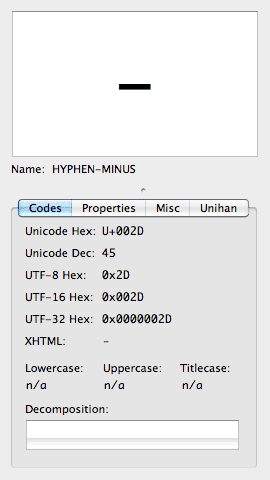“So tell me — why do you deserve to be a parent?”
There are a lot of things that go through your head at that moment. You think that maybe you should be offended, but then remember all the times you asked potential hires why you should give them the position. You think about everything you’ve done and been through just to get to this point, the paperwork and training and classes and inspections and certifications, wondering how all that time and energy and expense could go unnoticed even as you realize it wasn’t. It wasn’t overlooked. She knows about all that; this is something else. This is a character-divination exercise, just the latest in a very long series of hurdles, this one smaller than most, but a hurdle that has to be cleared all the same.
Because the basically cheerful, kindly woman sitting across the coffeeshop table from you holds your future in her hands. She can decide that you are not fit to be a parent. That power is hers.
You’ve gotten to know her over the previous months, through all the meetings and home inspections, and don’t think for an instant that she would turn you down capriciously or out of anything but a deep, genuine concern. She’s not out to get you, or stop you, or hurt you. She wants to help. It’s up to you to not screw it up.
Which is why you pause for a moment to consider your answer, not because you haven’t thought about this exact question and your answer to it a thousand times before, but because you don’t want to screw this up.
This is what it’s like to adopt.
In that moment of pause, a lot of impressions flood in. You don’t think about things, don’t remember events like a movie, but you feel all of their impressions on your life.
You recall deciding to stop using birth control, and the year of trying to get pregnant, using what is in effect the inverse rhythm method, and fittingly enough you got the opposite of the usual result. You recall the fertility consultations, the blood draws and testing and the sample bottle that you need to fill no matter how sterile and cold and impersonal the little room might be, because as soon as you do then the doctor can take your issue and put it into a contraption that will be inserted right up into your wife so the sperm are deposited exactly where they have the best chance of meeting up with an egg and doing their thing. With you holding her hand the whole time. You recall the elective surgeries to correct discovered conditions that turn out, in the end, to have no positive effect. You recall every one of the times the lab called to congratulate you on successful conception, and every one of the times the lab called a few days later to tell you that the pregnancy had failed, and how you learned that there are far, far more conceptions than there are pregnancies, even among those who aren’t undergoing fertility treatment. You recall finding out that your only hope of pregnancy was IVF, and even that was a long shot, not to mention medically inadvisable when you looked at it dispassionately, as if such a thing were possible.
You recall deciding together that being pregnant was not nearly as important to you as being parents.
This is what it’s like to adopt.
You recall the Fire Marshall telling you that your house’s wiring needed to be upgraded and you needed to post floor-by-floor fire evacuation maps — in your compact, center-hall Colonial, only-one-staircase house — before he could sign off on your form, the form you needed to be signed so you could proceed. You recall pressing your fingers into the fingerprint scanner so that the FBI could look into your background and declare your lack of criminality, so far as they knew, so you could proceed.
You recall sitting in the infant/child CPR class, looking at the other couples, some of them obviously well along in their pregnancies and others with no signs at all, you the only single person because your wife’s professional training already covers this stuff, wondering if any of them are hoping to adopt but not sure how to bring it up without looking like you’re trying to be a show-off or something.
You recall handing over more financial data than was required the last time you bought a house, which was the only time you bought a house, because you skipped the whole “starter home” thing and saved until you could buy the right house, the one with the huge front porch for summer dinner parties and the fireplace for winter evening cuddles and the bedrooms all about the same size so your someday children wouldn’t get into fights over who got stuck with the tiny room. You also recall knowing that one day they would fight about it anyway, because someone would bust out a tape measure and complain that they’d been shorted by eight square feet, and you couldn’t wait for that day.
You recall the agony of filling out your medical/social profile, twenty draining pages of research and prejudgment and soul-searching, asking yourself what you thought you could or could not accept in a newborn baby and its parents and their parents and relatives and asking yourself who you were to judge another life, and then remembering that if you hoped to be parents you’d better be ready to judge all the time, not angrily, but fairly and compassionately and (if at all possible) wisely. But you still had to finish this form, even though it felt like passing judgment on all the possibilities yet to be, because it had to be finished before you could proceed.
You recall wishing you could be angry about all the barriers and hurdles and hoops, all these things standing in the way of two people who wanted so much to raise a family, but understanding and accepting the reasons for all of them. You analyze conceptual systems by trade, pull apart ideas and specifications to see how the pieces work, spend lots of time figuring out the why as well as the how, and that’s how you can see all too clearly why all these trials exist. It is a grave responsibility to be a parent, and a graver responsibility for a third party to approve the transfer of a tiny, helpless, utterly dependent baby into a household of strangers. If the state and its designated agents are to be party to that transfer, then they are responsible for doing all that they can to ensure that the transfer is made to good, decent people who can provide all the kinds of nourishment a new life needs.
And so all the things you ever thought potential parents should be tested on before they’re allowed to reproduce, as you shake your head at some obvious example of terrible, terrible parenting, forgetting for a moment that everyone has bad days and that you don’t know the first thing about those people and their lives and histories, all those things you’ve thought should be part of the Are You Fit To Be A Parent Test are all placed in front of you now, and twice as much more that had never occurred to you, all standing between you and the someday family you decided to create.
You recall them all, all the weight of all those challenges, and you look her in the eye and draw in your breath to answer.
This is what it’s like to adopt.
After the interview is over, you chat for a bit and then go your separate ways. Soon you will finish up the last pieces of paperwork, send in your finished profile, and wait.
And wait.
And wait.
And wait.
And then one day, out of the blue, the phone rings and a frenzied chain of events are instantly set into motion, tying up loose ends and postponing appointments and deciding who to tell and making sure you have absolutely everything you need, because eighty hours after that phone call you are nestling a tiny, trusting, utterly exquisite baby to your chest and listening to it breathe, feeling its weight and warmth against you, your head still spinning from the uproar of the past few days and at the same time suddenly spinning the other direction because it hits you, with all the force of a newborn’s scent and all the piercing of a newborn’s cry, that you are holding your future in your hands.
This is what it’s like to adopt.
To be a parent.

